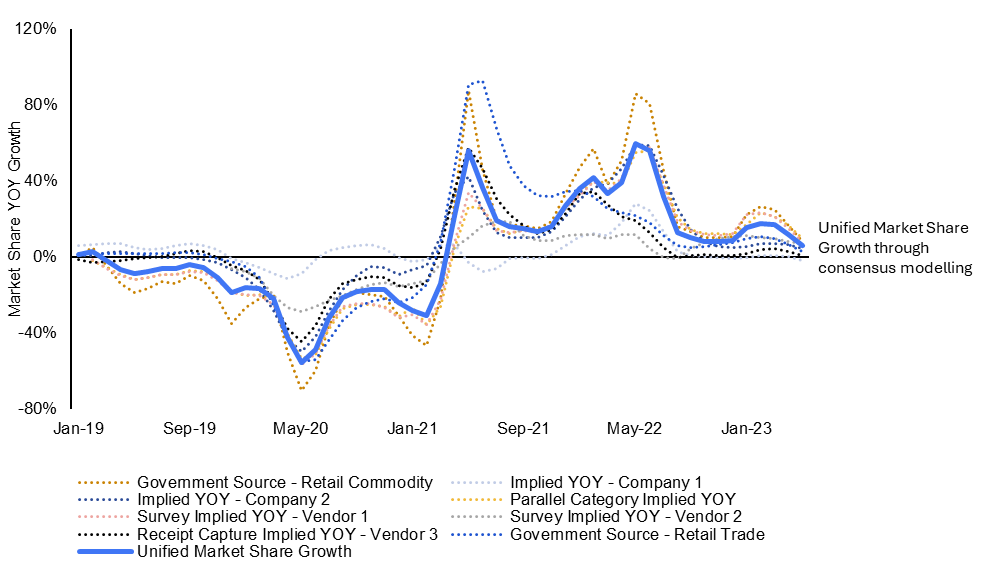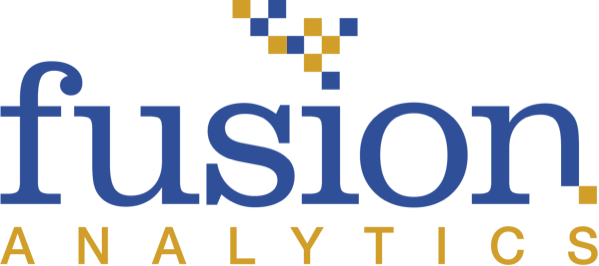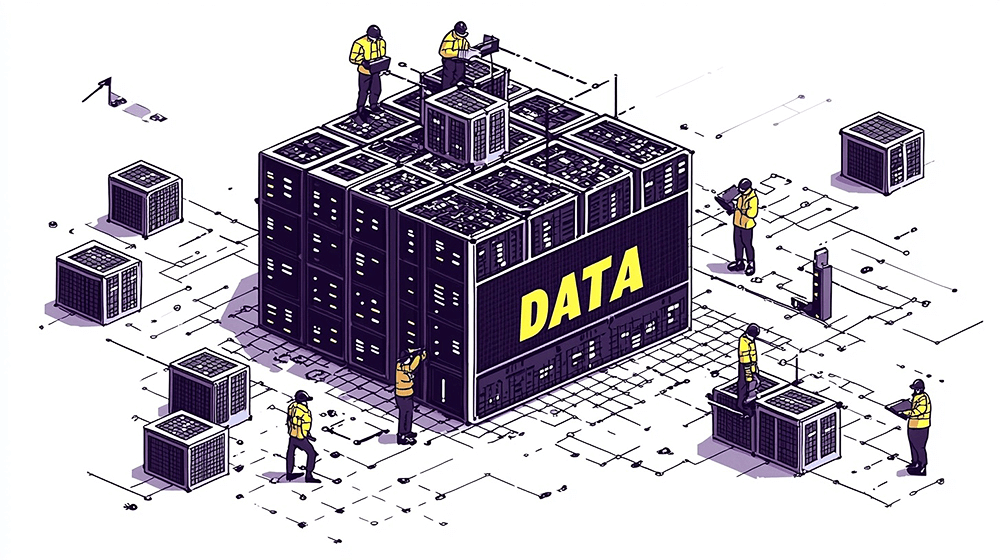Filtering data sources using Fusion Analytics’ AI Data Enrichment Engine is the first step in eliminating data noise. However, that alone is not sufficient. Individual data sources can contradict each other when viewed in isolation – the bias and disjoint between data sources within Data Chaos. Every department may have its own lens on business performance. As executives, it’s a headache to know how to put the different lenses together – “What is the true story? We don’t have the ONE view of the business.”
The Challenge of Siloed Data Sources
Different data sources often employ varied methodologies, exhibit nuanced biases, and present diverse insights. Without a method to Unify these discrepancies, it is difficult to derive meaningful insights.
For instance, consider a scenario where one data source, using POS receipt capture, indicates that Retailer A’s market share grew by +5% year-over-year. However, another source, based on survey data encompassing the entire market, suggests Retailer A experienced a -3% share loss over the same period.
Is Retailer A gaining or losing share? The discrepancy arises because the POS receipt capture method excludes Amazon and Costco, whereas the survey data provides a comprehensive view. Normalizing for these differences would align the two sources, providing a consistent narrative.
Statistically, the margin of error for each individual source is often larger than when combining multiple sources, thereby maximizing the data sample size and improving accuracy. Unifying data sources allows for a clearer, triangulated “One Version of the Truth” for each metric, where you can trust the insights for your decisions.
Fusion’s Unifying Source AI Engine focuses on:
- Align to Common Language: Standardizing all sources into a “common language” allows for much better comparability, scalability and flexibility. This alignment enables easier integration and correlation across different data sets, facilitating the discovery of the “One Version of the Truth.”
- Determine Statistical Consensuses: When multiple sources point to the same direction, this builds confidence in the insight. Fusion’s algorithm distinguishes true consensuses from false signals. It breaks down each data source into components, such as absolute values, growth rates and seasonality, to maximize their utility and relevance.
Example of Unifying multiple sources to One Version of the Truth:

Benefits of Fusion’s Unifying AI Engine
- Removing Errors and Biases: A single data source can be prone to inconsistencies and biases. For instance, Source A might have experienced a data collection anomaly, resulting in a step change in the data trend. Therefore, unifying with other sources can validate whether the anomaly is a true signal or a false read.
- Maximize Value when Combining Sources: Unifying multiple sources together maximizes each source’s individual strengths and fills gaps where the source doesn’t cover. For example, some sources focus solely on E-commerce, while others cover all retailers except for Amazon and other E-commerce only retailers. By statistically reconciling overlaps, integrating these sources provides a comprehensive Omni view for business insights.
- One Version of the Truth: Unifying multiple sources into one consensus simplifies decision-making across the organization. It eliminates debates over conflicting methodologies whenever discrepancies arise – one indicates growth while another indicates decline.
Synchronized Data Makes Better Decisions
Refine each raw data source by Filtering out noise, and then triangulate multiple sources to Unify the One Version of the Metric. Synchronize all the metrics and data into a decision-driven framework to paint a clear, comprehensive picture focused on your key decisions.
If you’re tired of battling unreliable data and its negative consequences, Fusion Analytics is here to assist. Let’s collaborate and uncover meaningful insights that foster confident decision-marking.
Contact Fusion Analytics – The Metric Improvement Company today for a demonstration.

